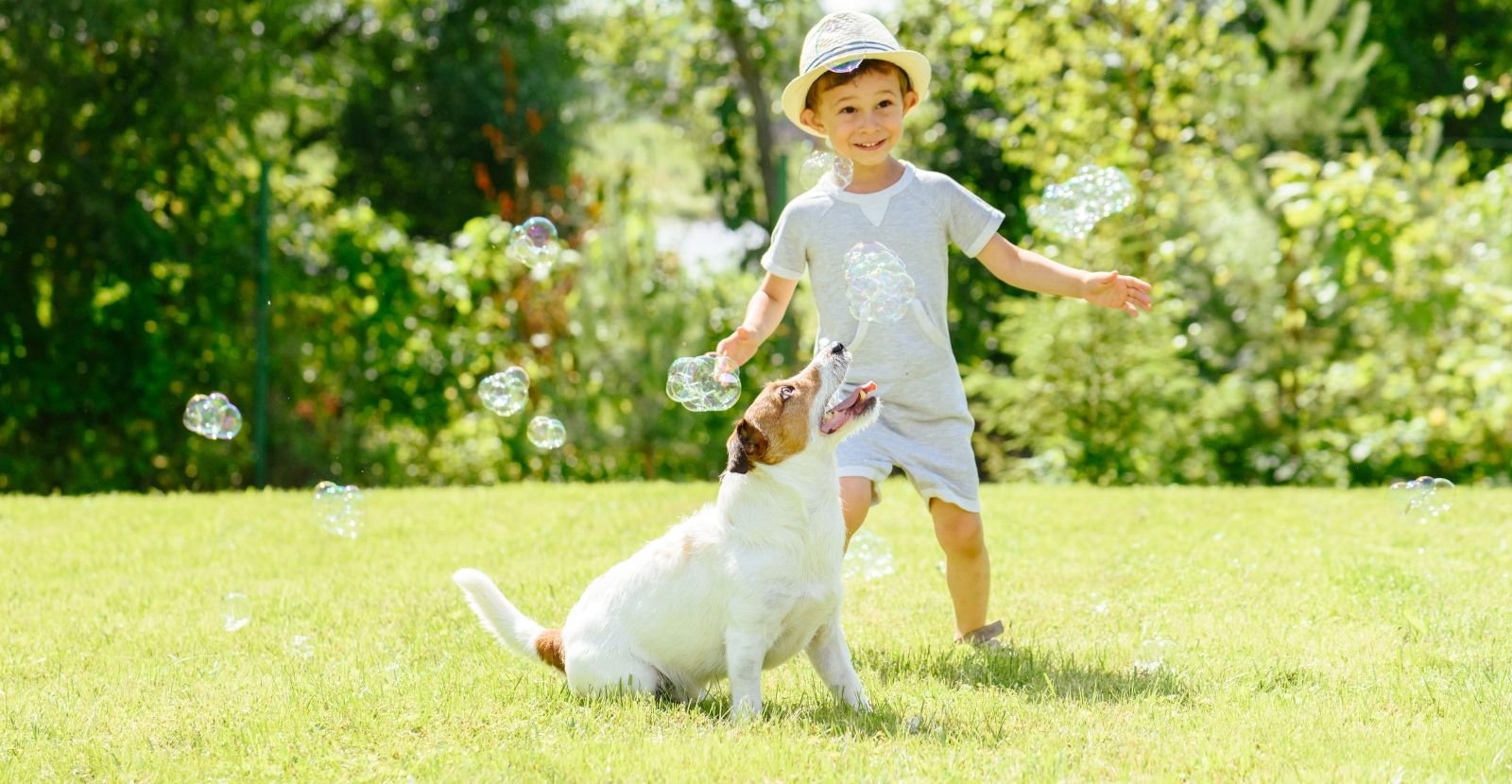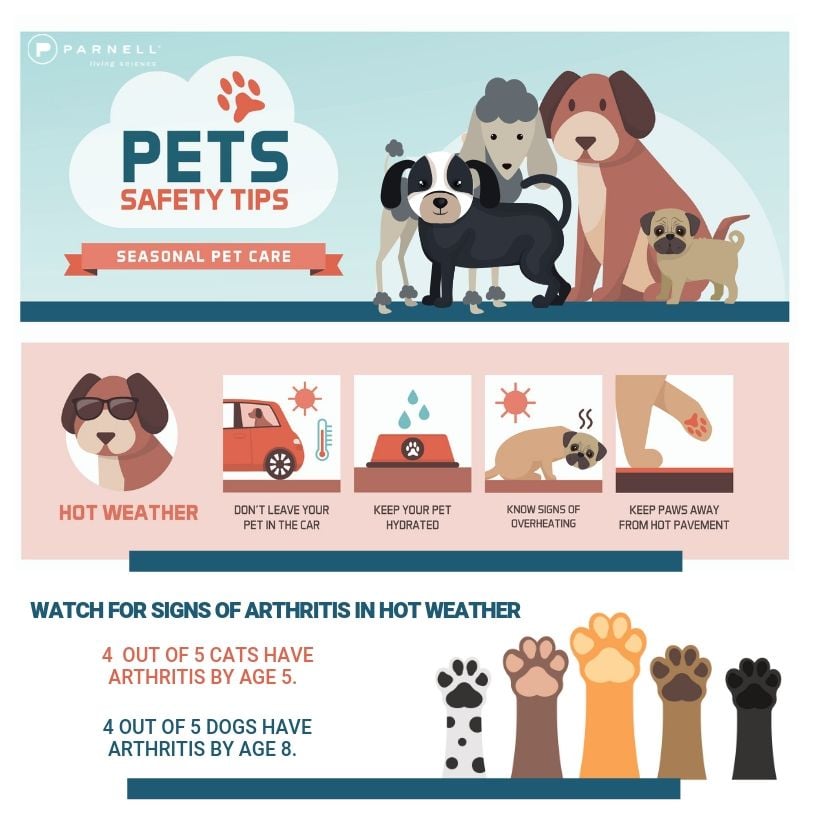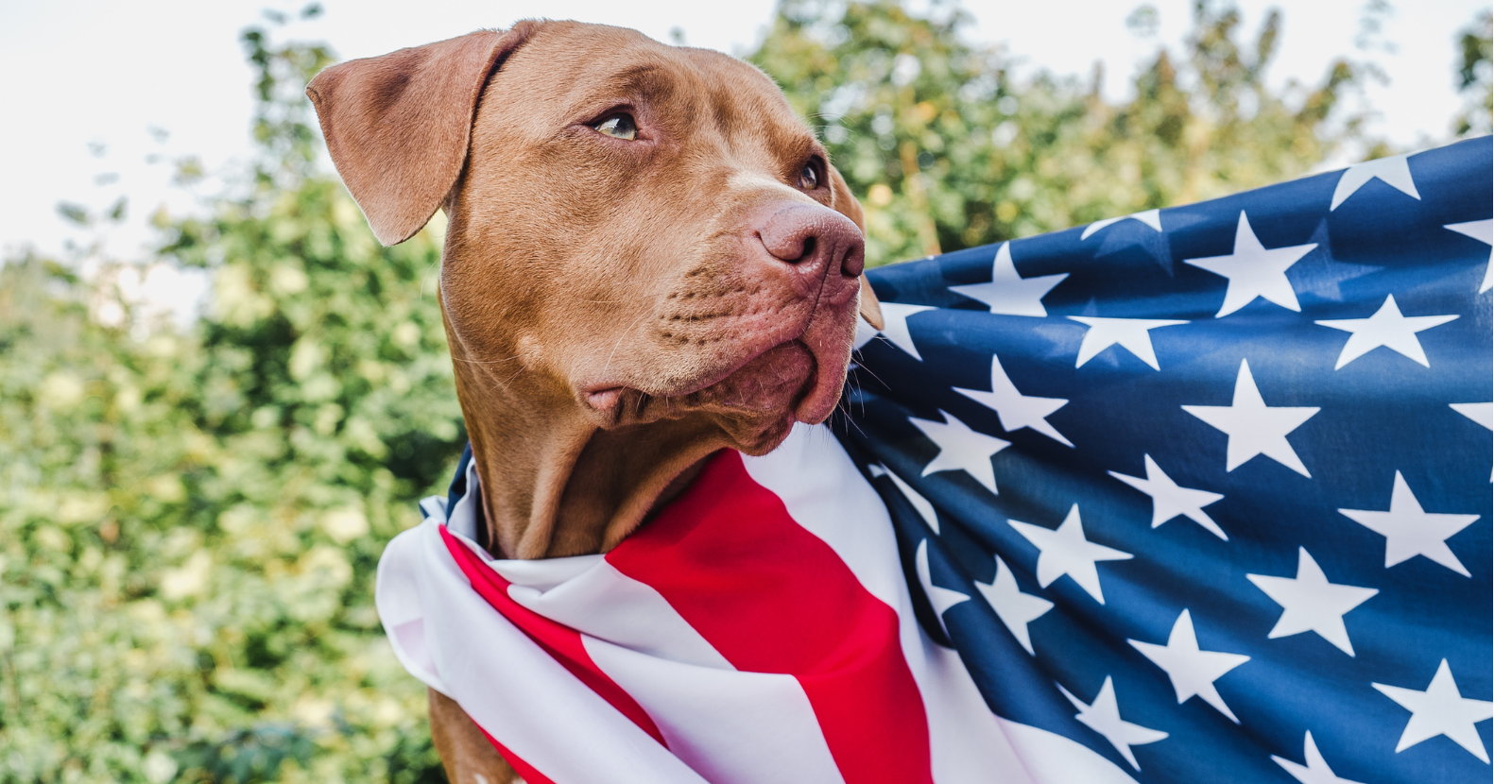
Summer has arrived in full force for many parts of the country. We all know with summer, the hot temperatures is a topic of concern when it comes to caring for our pets. When it gets hot outside, we change our own habits to acclimate to the weather. What do we do to help our pets? Here are some things to be sure you know about pet health in summer heat with a helpful "Pet Safety Infographic" about pet health during hot temperatures.
Another point of summer is the kids are home and they need some reminders to keep them involved in their pet's lives. Here is a way to keep them active and helping with their beloved fur-babies: a downloadable "Pet Chore Chart." We have tips on age-appropriate tasks for your children to do this summer while they are home with the family pet. Be sure to download your very own "Pet Chore Chart" to print out and assign those kiddos some tasks!

Here's further detail:
Keep Pets Indoors
We all know it is dangerous to have your pets in the sweltering heat of summer. Cars heat up quickly once in the summer sun. Plan to leave your fur-babies behind in the cooler temperatures in your house. Plus: receive those doggie kisses when you get home!
When they go outside temporarily for walks or to do their business, be sure you have them on a leash or enclosed back yard. It is easy for dogs to become disoriented in hotter temperatures with lack of water. Sometimes, they may wonder off. This is a good reminder to be sure your pet’s collar has current contact information or they are micro-chipped. If someone else finds them, these resources are extremely important.
Keep dogs Hydrated
This seems to be logical, but often you can lose track of time on how long you are outside. Remember your pet is wearing a fur coat and their body temperatures are naturally higher than a human's temperature. Be sure to keep cold water outside for your dog to drink. Consider using a hose to cool them off, or providing a baby pool of water for your dog to wade in. Anything that can give your dog some relief will pay off in the end to keep them hydrated.
Know Signs of Overheating
You know your dog, so you most likely will know when they are close to overheating. Just as humans can suffer in the extreme heat, so can dogs. They can suffer from heat exhaustion, heat stroke and sudden cardiac arrest due to the high temperatures.
Here are the signs of an overheated dog:
- Collapsing
- Panting too fast
- Noisy breathing
- Disorientation
If you suspect your dog of overheating, here is what you should do:
- Hydrate your dog as soon as possible
- Use cool, wet towels or water to get their body temperatures lowered
- If you feel your dog is at the danger zone of being overheated, contact your veterinarian or make a visit to the Pet ER hospital. Often at these facilities, they will provide cool fluids, and even an IV, if fluids are needed immediately.
Keep Paws Away from Hot Pavement
On an average summer day, the asphalt can get as hot as 60 degrees Celsius. You most likely have shoes on when walking on it. Your pet is using their paws, and they can get burned. The easiest solution is to walk dogs when it’s cooler outside. However, if you are going out, here is what you can do to protect your dog’s paws:
- Protect their paws with a special protection wax. There are many products on the market to protect paws. A quick internet search will give you many options. Even a quick coating of petroleum jelly will help give their paws some slight protection.
- Be sure to keep your dog in the grass if there is some available.
- When running and walking in the beach, let your dog go in the water as often as possible.
Then once you are home, use a towel and water to wash your dog’s feet. This will help keep them moisturized and clean for many walks to come.
Watch for Signs of Arthritis
According to Petmd.com, arthritis is fast becoming one of the most common health problems seen by veterinarians. Just as in humans, hot weather can make joints swell and ache more, thus the signs of arthritis more apparent.
Unfortunately, 4 out of 5 dogs by age 8 and 4 out of 5 cats will have signs of arthritis by age 5. An even more surprising statistic is 1 out of 5 dogs will have signs of arthritis by the time they are one year old! Of course, this says just as all humans age differently, dogs age differently too, depending on a variety of factors. The best thing is to know what to look for to detect arthritis.
Some common signs of arthritis to look for include:
- Hesitation or visible discomfort when getting up from sleeping
- Hesitation or visible discomfort when jumping into a car, going up stairs or getting out of bed
- Lack of willingness to play as often as they once did
- Less activity, more sleeping
Parnell Living Science, the makers of Glyde™ Mobility Chews, are committed to protecting dogs and cats from arthritis. Glyde uses all-natural ingredients to combat the signs of aging and promote healthy joints that let your dog do everything he or she loves to do! Glyde contains proven level of three key components that work to relieve the painful signs of arthritis.
- New Zealand Green Lipped Mussel (GLM): A powerful anti-inflammatory
- Glucosamine: Reduces cartilage degradation
- Chondroitin Sulfate: Helps rebuild cartilage
Summer Pet Chores for Kids
Do you have children at home for the summer? Get started now on getting them involved in the upkeep of having a pet. Some day they will want a pet and they need to know how much time it does take care of a pet. Here are a few chores children can do, based on their ages.
First, download your own Pet Chore Chart here:
Just start assigning some task like these ideas below, based on the ages of your kids. Fill out the page and you'll have some great things done by your little ones to help with the family pet. Here are some pet chore ideas below, but we are sure you can come up with some more based on your experience at home. Take the ones you want, and add it to your FREE downloadable Pet Chore Chart!
1 – 4 years:
- Play nicely with our pet
- Give all pets the space that they need
- Pick up pet toys left out
5 – 8 years:
- Feed the pet once per day
- Change the pet’s water once per day
- Walk the dog in the park together with the parent
- Brush the pet’s fur once per day
- Help the parent train the dog
- Play with the cat in a meaningful way
9 – 14 years:
- Feed the pet all meals
- Change the pet’s water once per day
- Walk the dog for 30 minutes
- Pick up doggie poo in the back yard
- Clean out the litter box for the cat
- Train and play with the pet in a meaningful way
- Brush the pet’s fur once per day
- Be sure they pet gets their vitamins like Glyde™ Mobility Chews every day (sometimes parents forget)
15+ years:
- Feed the pet all meals
- Change the pet’s water once per day
- Run or walk the dog for 45 minutes
- Pick up doggie poo in the back yard
- Clean out the litter box for the cat
- Train and play with the dog
- Brush the pet’s fur once per day
- Be sure they pet gets their vitamins like Glyde™ Mobility Chews every day (sometimes parents forget)
- Bathe the dog when necessary
- Take the pet to the vet, when necessary for preventative appointments and grooming
Now, take these tasks and add them to your own special version of our "Pet Chore Chart" by clicking on the link below.
Now that summer is upon us, get ready for fun, safety and also learning responsibility for your kids. They want to help and now they can. Besides, our pets are worth the effort! Enjoy your summer safely, with your pets and those helping where they can!




.png)

